A nature photographer brings his photo equipment out in the mountains and forests
in order to shoot landscapes, flowers, animals and birds. Everyone is free to name himself nature photographer,
but you should at least have taken some pictures suitable
for publishing before doing so.
Modern, digital cameras represent a new era in photography. Combined with advanced computer software for images, nature photographing is quite a different business compared with the film shooting period.
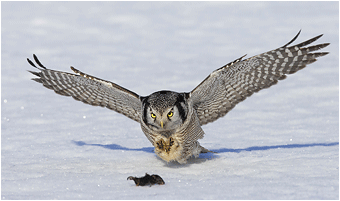
The speed of a hawk owl catching his prey is amazingly fast.
No second class photo gear is suitable for getting professional
pictures of this phenomena. You need a portion of training
beforehand too.
This image is
shot in Finland on March 2009.
Canon 1D mk3 300mm, ISO 1000, f 7, 1/4000. D5J8770.
Award winning images 10 years ago are often considered average today, due to the digital revolution. The search for the attractive impressions, actions, situations and perfect light conditions is always the same: Just as decisive as ever.
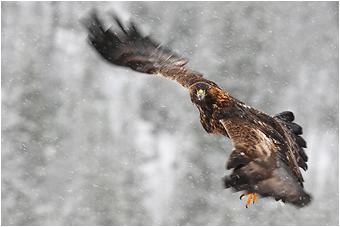 Golden eagle in heavy snowfall. Flatanger, Norway, February 2008.
The movement of the wings is very important for the
Golden eagle in heavy snowfall. Flatanger, Norway, February 2008.
The movement of the wings is very important for the
quality of
this image, but the snowfall
is crucial.
300 mm, f6,3 og 1/320. D5J9597.
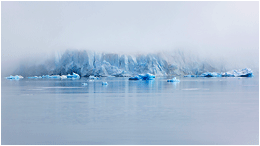 Liefdefjorden,
Svalbard summer 2008.
Liefdefjorden,
Svalbard summer 2008.IDs Mk III, 150 mm, f11, 1/250 sec. ISO 200.
Ref: F5R0257.
A memorable day in Svalbard on July 16. 2008. Accompanied by some fellow nature photographers
I was approaching the ice shelf in Liefdefjorden by zodiac.
It was heavy fog and nothing to see. Suddenly the fog lifted, unveiling the most spectacular view in beautiful light over the blue ice. The light is everything when it comes to importance.
No light - no picture! The quality of light varies throughout the day and are most appealing in
early morning and in the last hours of the day. On bright days, the light conditions in the middle of the day are very unfavorable for nature photos.
As ever - the content in the image is the most important thing. If the technical quality is first class as well, you are well off!
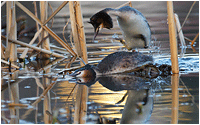 Great Crested Grebe on the lake Østensjøvannet, located inside the
Great Crested Grebe on the lake Østensjøvannet, located inside the
city of Oslo. April 5. 2008.
1D Mk III + 600 mm.
ISO 1000, 1/125 F 5,6.
B8Y9716.
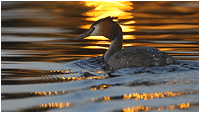 Great Crested Grebe in sunset. April 2009. Images of this genre are not as impressive as they were a decade ago.
Still beautiful though. D5J4914.
Great Crested Grebe in sunset. April 2009. Images of this genre are not as impressive as they were a decade ago.
Still beautiful though. D5J4914.
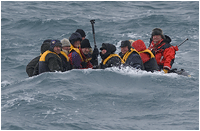
Don't always trust your eyesight! One situation could prove quite different
from what it appears to be:
We had been out on a zodiac trip in
Svalbard on September 10. 2005.
It was rather rough weather conditions. My zodiac was the first one to reach our expedition ship "Origo".
The other zodiac, filled up by friends from Vårgårda Fotoklubb, had to wait for a while in the impressive waves.
Comfortably standing on the deck of "Origo", I got several good opportunities to push button when my friends apparently were at steak of being swallowed by the hostile sea. M9D2799.
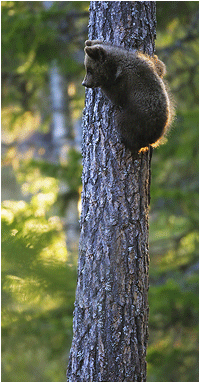
Nature images are most commonly shot in horizontal
shapes (landscape format). Sometimes the portrait format is the only option, and
this could often prove a good resource when it comes
to filling out a vital space in a layout.
From "the no man zone" between Finland and Russia in Northern
Finland in summer 2008.
D5J3280.









